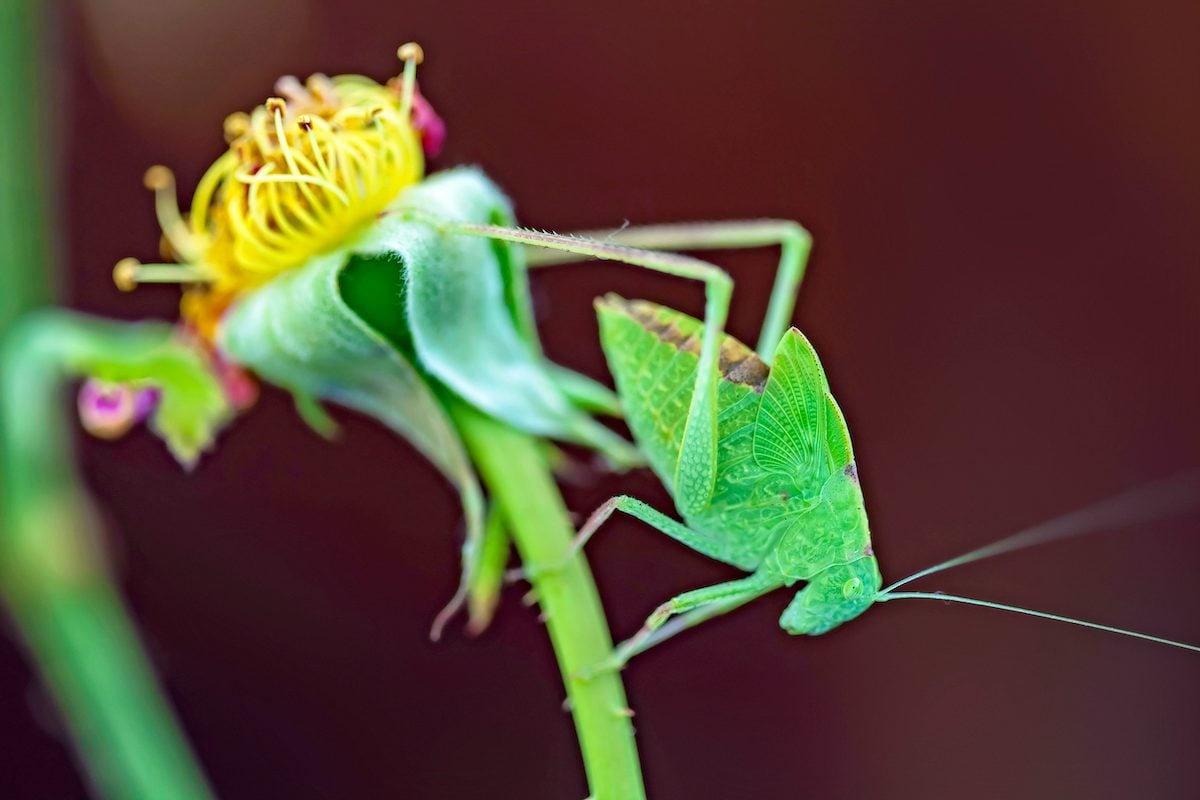
Nocturnal Garden Concert: Katydids & Crickets in Full Voice
The Nocturnal Concert: Understanding Crickets and Katydids
As the sun dips below the horizon, a symphony of sound emerges from the shadows. You may not see the performers, but their music fills the night air—pulsating, chirping, clicking, and buzzing from every direction. This nightly concert begins shortly after dusk and typically continues until around midnight, lasting well into November in some regions. The secret singers? Crickets and katydids.
Depending on your location, you might hear the sounds of hundreds of different species, each with its unique call. Some have amusing names like the melodious ground cricket, splendid shield-backed katydid, or robust conehead. These insects are not just fascinating to listen to; they play essential roles in their ecosystems and can even be indicators of environmental health.
Creating a Habitat for Night Singers
Night-singing insects inhabit a variety of ecological niches, making homes under logs, in fields, marshes, deserts, shrubs, trees, grasses, and even our own yards. To attract a diverse array of these musicians, consider planting your garden in layers, much like you would for birds. Naturalist and educator Carl Strang recommends incorporating a mix of trees, bushes, and herbaceous plants, including native species, to create a rich habitat that supports various insect life.
Why Do They Sing?
Only male crickets and katydids sing, and they do so for reasons similar to those of birds: to attract mates and defend their territories. However, unlike birds, they produce sound through a mechanical process called stridulation, scraping one wing against another. Female crickets and katydids detect these calls through earlike structures located on their legs and then move toward the source.
Interestingly, these bugs are cold-blooded, meaning their activity levels fluctuate with temperature. As it rises, they become more animated in their singing, while cooler temperatures slow them down. A fun way to engage with this behavior is by using the snowy tree cricket as a natural thermometer. Count the number of chirps in 13 seconds, add 40, and you’ll get an approximate temperature in Fahrenheit!
When Are They Active?
On warm summer nights, backyards come alive with the sounds of these musical insects. They’re present throughout the day but remain silent in treetops, bushes, or on the ground. Their green or brown camouflage makes them easy to overlook during daylight hours. However, at night, they feel safe from predators like birds and begin their nightly serenade.
What Do They Eat?
Most of these nocturnal singers are vegetarians, feeding on foliage, fungi, or flowers. Some visit gardens for petals, pollen, or smaller insects, while others nibble on leaves or capture any lesser critter in their path. Despite their presence, they don’t pose threats to agriculture and generally go unnoticed during the daytime. According to Carl Strang, you might spot them while gardening if you watch for movement as they scurry out of your way.
Finding these musicians can be tricky since they often fall silent when approached. Check flowers like asters, goldenrod, Autumn Joy sedum, and autumn-flowering clematis at night, which serve as prime hunting grounds. Remaining still when an insect goes quiet and advancing when it resumes singing can help you locate them.
Predators of Crickets and Katydids
During the day, birds easily spot these night singers and scour the foliage to find them, despite their silence and camouflage. Parasitic wasps also seek them out to use as hosts for their eggs and larvae development. Mice and other small animals may also prey upon these musical insects.
Identifying Their Sounds
Identifying the sounds of crickets and katydids can be challenging, but starting with the big three species provides a solid foundation:
- Field Cricket: High-pitched throbbing chirps.
- Snowy Tree Cricket: A deeper rhythmic chirping, often mistaken for field crickets.
- Common True Katydid: A grating three-syllable rasp, declaring ‘katy did!’
For those interested in learning more, the Singing Insects of North America website offers sample songs of crickets and katydids, helping enthusiasts match sounds to specific species.
Dr. Carl Strang, a naturalist and educator with a doctorate in wildlife ecology, has dedicated his career to documenting and studying these sounds. He is the author of “Singing Insects of the Chicago Region,” a guide that explores the audible displays of crickets, katydids, grasshoppers, and cicadas. His work emphasizes the importance of understanding these insects and their roles in our ecosystems, encouraging everyone to appreciate the nocturnal concerts happening right outside their doors.